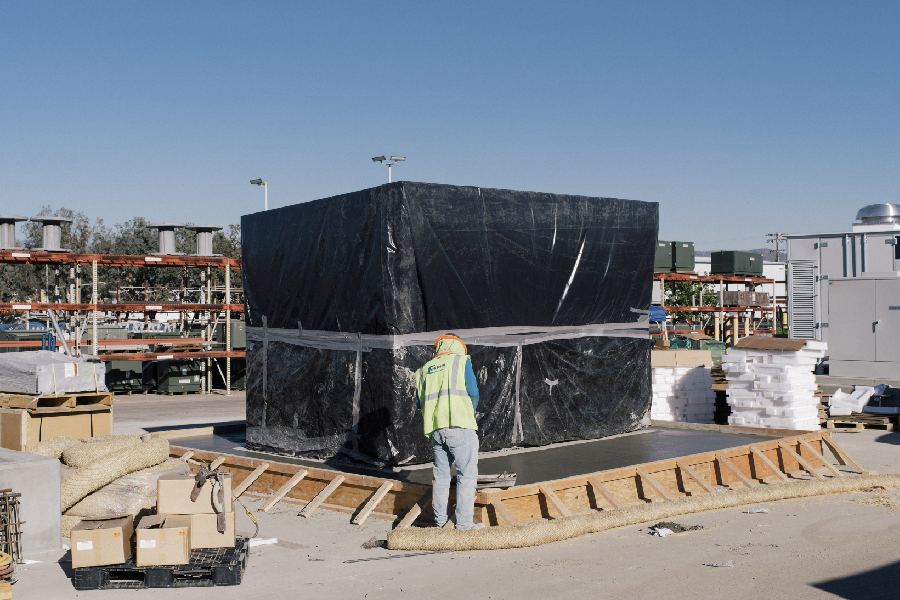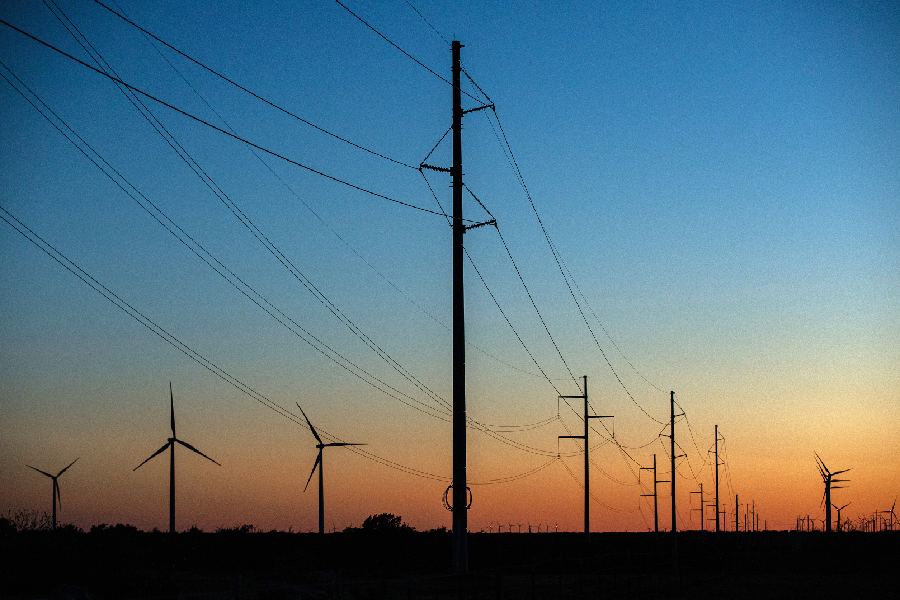California draws more electricity from the sun than any other state. It also has a timing problem: Solar power is plentiful during the day but disappears by evening, just as people get home from work, and electricity demand spikes. To fill the gap, power companies typically burn more fossil fuels like natural gas.
That’s now changing. Since 2020, California has installed more giant batteries than anywhere in the world apart from China. They can soak up excess solar power during the day and store it for use when it gets dark.
Those batteries play a pivotal role in California’s electric grid, partially replacing fossil fuels in the evening. Between 7 p.m. and 10 p.m. April 30, for example, batteries supplied more than one-fifth of California’s electricity and, for a few minutes, pumped out 7,046 megawatts of electricity, akin to the output from seven large nuclear reactors.
Across the country, power companies are increasingly using giant batteries the size of shipping containers to address renewable energy’s biggest weakness: the fact that the wind and sun aren’t always available.
“What’s happening in California is a glimpse of what could happen to other grids in the future,” said Helen Kou, head of U.S. power analysis at BloombergNEF, a research firm. “Batteries are quickly moving from these niche applications to shifting large amounts of renewable energy toward peak demand periods.”

A grid-sized battery energy storage facility in Escondido, Calif., Nov. 18, 2016. They’re delivering solar power after dark in California and helping to stabilize grids in other states. And the technology is expanding rapidly. Coley Brown/The New York Times
Over the past three years, battery storage capacity on the nation’s grids has grown tenfold, to 16,000 megawatts. This year, it is expected to nearly double again, with the biggest growth in Texas, California and Arizona.
Most grid batteries use lithium-ion technology, similar to batteries in smartphones or electric cars. As the electric-vehicle industry has expanded over the past decade, battery costs have fallen by 80%, making them competitive for large-scale power storage. Federal subsidies have also spurred growth.
As batteries have proliferated, power companies are using them in novel ways, such as handling big swings in electricity generation from solar and wind farms, reducing congestion on transmission lines and helping to prevent blackouts during scorching heat waves.
In California, which has set ambitious goals for fighting climate change, policymakers hope grid batteries can help the state get 100% of its electricity from carbon-free sources by 2045. While the state remains heavily dependent on natural gas, a significant contributor to global warming, batteries are starting to eat into the market for fossil fuels. State regulators plan to nearly triple battery capacity by 2035.
“The future is bright for energy storage,” said Andrés Gluski, CEO of AES Corp., one of the world’s largest power companies. “If you want more renewables on the grid, you need more batteries. It’s not going to work otherwise.”
How Batteries Work on the Grid Today
When power companies first began connecting batteries to the grid in the 2010s, they mainly used them to smooth out small disruptions in the flow of electricity, say, if a power plant unexpectedly tripped offline. Many battery operators still earn most of their revenue by providing these “ancillary services.”
But power companies also use batteries to engage in a type of trading: charging up when electricity is plentiful and cheap and then selling power to the grid when electricity supplies are tighter and more expensive.
In California power prices often crash around midday, when the state produces more solar power than it needs, especially in the spring when air conditioning use is low. Prices then soar in the evening when solar disappears and grid operators have to increase output from gas plants or hydroelectric dams to compensate.
California now has 10,000 megawatts of battery power capacity on the grid, enough to power 10 million homes for a few hours. Those batteries are “able to very effectively manage that evening ramp where solar is going down and customer demand is increasing,” said John Phipps, executive director of grid operations for the California Independent System Operator, which oversees the state’s grid.
Batteries can also help California’s grid handle stresses from heat waves and wildfires, Phipps said. “It made some differences last summer,” he said. “We were able to meet high load days and wildfire days when we might lose some power lines.”
In Texas, batteries are still largely used to provide ancillary services, stabilizing the grid against unexpected disruptions. Texas is also more reliant than California on wind energy, which fluctuates in less predictable patterns.
But Texas is quickly catching up to California in solar power, and batteries increasingly help with evening peaks. On April 28, the sun was setting just as wind power was unexpectedly low and many coal and gas plants were offline for repairs. Batteries jumped in, supplying 4% of Texas’ electricity at one point, enough to power 1 million homes. In the summer, batteries helped avert evening blackouts by providing additional power during record heat.
Other states are following. In Arizona and Georgia, utilities plan to install thousands of megawatts of battery capacity to help manage rising demand from data centers and factories. It helps that batteries can be deployed quickly, said Aaron Mitchell, vice president of planning and pricing at Georgia Power.
The industry still faces obstacles, however. Lithium-ion batteries are flammable, and while operators have taken steps to reduce fire risk, some communities oppose projects in their backyards. Most batteries still come from China, making them vulnerable to trade disputes. In Texas, a state fund to subsidize gas plants could undercut the battery boom. In other states, complex regulations sometimes prevent utilities from adding energy storage.
“Because these storage resources are so new, the rules are still catching up,” said Natalie McIntire, who works on grid issues for the Natural Resources Defense Council, an environmental group.
Can Grid Batteries Help Fight Climate Change?
Grid batteries could be a useful tool to slash planet-warming emissions, experts say, though they still need further advances in terms of costs, technologies and how they are used.
In Texas, many batteries today are actually increasing carbon dioxide emissions, according to one analysis. That’s because operators focus on maximizing revenue and sometimes charge with coal or gas power.
“These batteries have an immense capability to abate carbon, but they need the right incentives to do so,” said Emma Konet, co-founder of Tierra Climate, a startup working to help batteries earn money for reducing emissions.
In California, by contrast, batteries appear to be cutting emissions from fossil fuels. The state’s gas use in April fell to a seven-year low. “We have reached the conclusion that batteries are displacing natural gas when solar generation is ramping up and down each day,” said Max Kanter, CEO of Grid Status, an electricity-data-tracking firm.
Yet California still gets roughly 40% of its electricity from natural gas, and it could be difficult for current battery technology to replace all of that.
Today’s lithium-ion batteries typically only deliver power for two to four hours before needing to recharge. If costs keep falling, battery companies might be able to extend that to eight or 10 hours (it’s a matter of adding more battery packs), but it may not be economical to go far beyond that, said Nate Blair, an energy storage expert at the National Renewable Energy Laboratory.
That means additional long-duration storage technologies could be needed. If California wants to rely largely on renewable energy, it will have to handle weeklong periods where there’s no wind and little sun. Another challenge: There’s far more solar power available in summer than in winter, and no battery today can store electricity for months to manage those seasonal disparities.
Some companies are exploring solutions. In Sacramento, California, a startup called ESS is building “flow” batteries that store energy in liquid electrolytes and can last 12 hours or longer. Another startup, Form Energy, is building a 100-hour iron-air battery. These ideas will have to compete against alternatives like nuclear power, advanced geothermal energy or even using green hydrogen to store electricity.
California’s regulators say they may need five times as much storage capacity by midcentury, even if it’s unclear which technologies will prevail.
“We’re just at the beginning of this,” said Phipps of the California Independent System Operator.
The New York Times News Service











